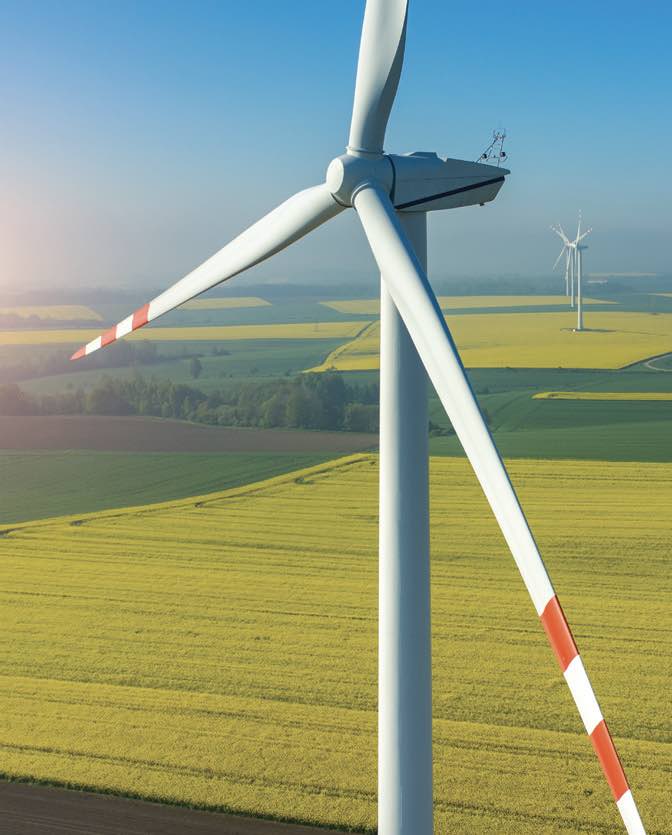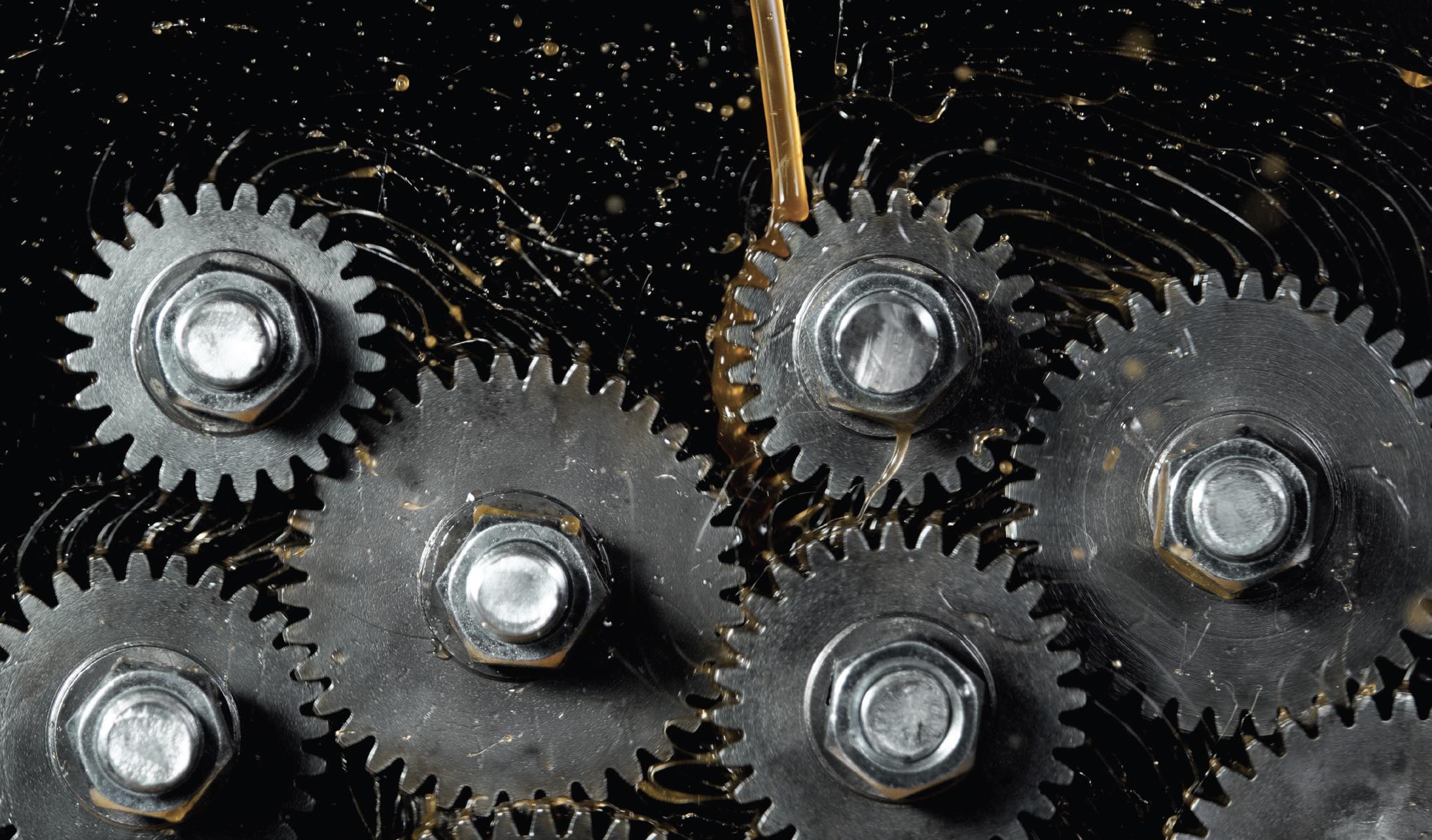Executive Summary
Lubrication professionals must solve a wide range of gear lubrication problems, depending on the type of environment in which they work. Some challenges involve compatibility, cost, training and harsh conditions. Regardless of the application, many readers agree that choosing the right lubricant and additives for the job not only solves many problems but can prevent them in the first place.
Q.1 What problem have you encountered involving gear lubrication, and how was it solved?
High moisture in lubricant, abnormal wear and cold start up. Resolved by design changes such as better breathers, synthetic lubricant and gears metallurgy.
One of a family of gearboxes was overheating, though they all used the same lubrication. The problem was traced to the viscosity being too high for the operating conditions, which led to excess heat from fluid friction. Switching to a lower grade solved the problem.
Seal compatibility—formulate a balanced product with seal friendly components.
Several different issues seen for various pieces of equipment. From foaming in wind turbines, to water contamination on deck winches, to operating equipment below the fluid’s pour point, to the ingress of hydraulic fluid, to burning up the gear oil—most problems faced the same solution. Due to the small size of most of the equipment involved, a system hot oil flush and fluid change (either with same product or a fully synthetic multi-viscosity fluid) usually fixed the problem. In the case of water contamination, a chemical flush was required to remove the interior surface corrosion (thankfully the gear teeth were not too badly damaged yet). In the case of hydraulic oil ingress, changing over to a higher pressure rating on a shaft seal, rather than a mechanical one, solved the issue.
How important do you think gears and gear lubricants are in contributing to improved fuel economy for your operating equipment?
Very important
72%
Somewhat important
21%
Not very important
5%
Do not know
2%
Based on an informal poll sent to 15,000 TLT readers.
We have quantified gear life extensions and oil life extensions by using a full synthetic final drive and axle oil. The yearly savings came out to over $11 million, with over 60 Kl of oil saved, and a safety benefit of over 2,400 hours reduced exposure. There also are fuel efficiency gains related to this project that have not been quantified yet, but fuel reduction also will be significant.
Contamination, wrong lubrication application, high temperature.
Gear pitting under very high load. It was resolved by using an anti-micropitting type of gear oil.
Premature gear failures, changed from standard gear oil type to polyalkylene glycol-based gear fluid, and the problem was solved and has been running more than 10 years without issues.
Oxidation.
Supplier no longer making what was used for an external in the open large gear set. We characterized the grease using a mini traction machine and rheometer and then did the same with potential replacements to choose one.
Lack of lubrication on difficult to reach conveyor motor and gearbox bearings—installation of automatic lubricators.
Overfilling causing seal leaks.
Jacking rig noise. Solved with improved formulation lubricating grease.
Cold operating temperatures required the use of synthetics, which allowed the use of the recommended viscosity.
One of the perennial problems involved in gear lubrication is under or over lubrication, oil quality, apart from other problems like almost near dry running, resulting in wear and tear, partially broken tooths or metal debris. We resolved this issue by having round the clock online monitoring of the gearboxes, and allied peripherals, real time monitoring of debris, oil quality, etc.
I’m an analyst, so no particular problem. I just wanted to have a better understanding of the impact of electrification on lubricants.
Had to make adjustments to lubricant viscosity. Units operating above or below the OEM gearbox specified Hz.
The biggest problem has been getting gear oil additives to make gear lubricants! Solution-reformulation, rationing products, turning away business. From an oil analysis lab perspective, many times it is difficult to analyze gear lubricants with higher viscosities (some greater than 1,000 cSt). We usually solve this issue through recommended dilution strategies recommended by the manufacturer and/or utilizing third party labs with more specialized equipment.
The reliability of a wind gearbox is a big concern within the wind industry. A com- parison of key characteristics of premier branded commercially available wind 73gearbox oils was conducted. The evaluation was conducted based on the antiwear properties, micropitting and scuffing protection, stability against oxidation, corrosion and rust protection, water handling, filter life, antifoaming properties and how well they protected the equipment. The rating was provided based on the test results of these properties on a scale of 0 to 10 and plotted them on a spiderweb diagram, with the poorest performance at the center (rating 0) and the best performance along the outside perimeter (rating 10). Although no oil excelled in all properties, a couple of them exhibited the best overall performance.

Aluminum rolling mill work roll bearing failures. Discovery of the problem was due to wage and price controls in the 1970s. I was a new maintenance foreman with six months experience working midnight shift. I was a recent Purdue engineering graduate and had pulled the rabbit out of the hat on a night shift major electrical problem. I brought in technical experts from the bearing manufacturer and the oil vapor lubrication system supplier. It was a classic lubrication failure easily corrected after implementing changes suggested by the expert from the bearing manufacturer and lubrication system representative. Huge cost savings.
Oil splashing too hard on the gears creating foam that led to gear damage.
Lack of knowledge about how important the running-in phase for the life span of the gears is and how gear lubrication plays a critical role in it.
It has noticed moisture entering the oil through a damaged (crumbling) gasket. The introduction of an additional replaceable absorber inside the transmission partly solved the problem.
Most gear sets are relatively easy to lubricate. Challenges occur with heavy loads, high speeds and high temperatures. These problems are generally solved with additives and/or by selecting the correct viscosity.
Excess foaming.
One problem that I encountered with an open gear was that the viscosity of the gear oil was too low, causing the gear to not be properly lubricated.

Used the “right” gear lubrication, and it is fine.
Gear scuffing failure, gear wear.
As we know, for the fuel efficiency reason, lower viscosity fluids may be selected and will cause wear-related issues. Gear surface wear patterns, such as scuffing, wear, polishing, oxide layer, micropitting, etc.—those classifications will impact judgement; sometimes customers may check just from the surface, which may cause confusion. We usually combine the oil sample wear element (ICP) and ferrography analysis investigation method to demonstrate the results, also refer to the ANSI/AGMA 1010-F14 guideline.
Rust buildup on gears with semisynthetic coolant, because coolant leaked into the gearbox. It was solved by changing the coolant from semisynthetic to soluble oil.
Gear durability plays a vital role in machine functioning.
Uniform spray and uniform lubrication distribution across girth gear.
Coatings and advanced liquid lubricant media have been applied onto gear components, for increasing durability and reliability as well as operational endurance. The combination/compatibility of coating/liquid composite interface is required.
Failure of gearboxes due to insufficient lubrication and cooling system defects leading to overheating.
Viscosity decrease due to excessive shearing of the viscosity index improvers.
Excessive wear; use of bench screener tests and novel extreme pressure additive.
Excessive contamination leading to abrasive wear. Solved by better housekeeping practices, including desiccant breathers.
Automotive gear lubricants have a trend of having lower viscosities, especially for electric vehicles. The purpose is to improve the energy efficiency and heat transfer. However, the optimized viscosity to achieve improved energy efficiency and extend the durability is highly dependent on gearbox designs and applications. Rig and dynamometer tests to find the optimized viscosity are very important, yet difficult, to automotive gear lubricant design.
Closed gears are covered by oil. Here the sealing is a point of interest. With open gears the lubricant must stay on the surface and, on the other hand, should not collect too much dirt from the environment. In general an automatic lubrication system covers these needs in an acceptable way. A further problem is that not too much information about correct lubrication of open gears is available. Everyone is quite shy to share this knowledge.
Low temperature startup (-35 to -40 C ambient) with an ISO 220 mineral; replaced with ISO 220 polyalphaolefin to resolve.
There was a machine in our factory with open gears; the only way to lubricate was manually with either a brush or a pump oiler. We designed and installed a central lubrication system that applied a few drops of oil every hour on every third gear, which extended the life of the gears 10 times.
1. Decrease noise. Increase the viscosity of base oil. 2. Transmission efficiency. Reduce friction coefficient.
Editor’s Note: Sounding Board is based on an informal poll sent to 15,000 TLT readers. Views expressed are those of the respondents and do not reflect the opinions of the Society of Tribologists and Lubrication Engineers. STLE does not vouch for the technical accuracy of opinions expressed in Sounding Board, nor does inclusion of a comment represent an endorsement of the technology by STLE.